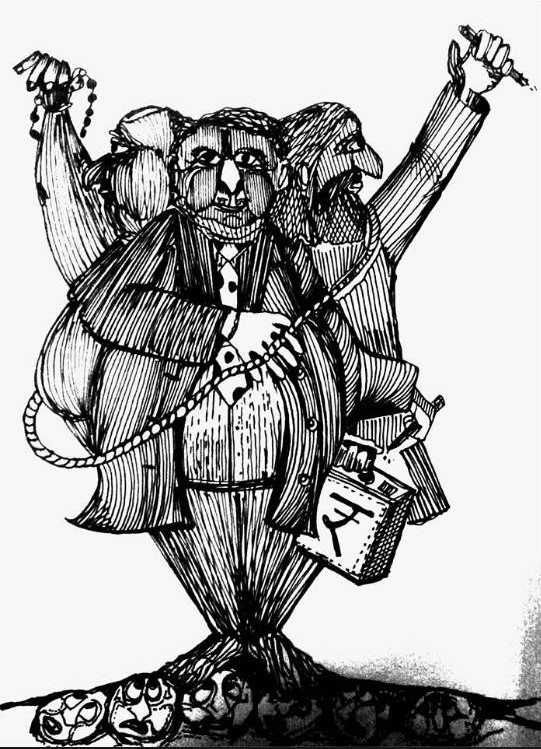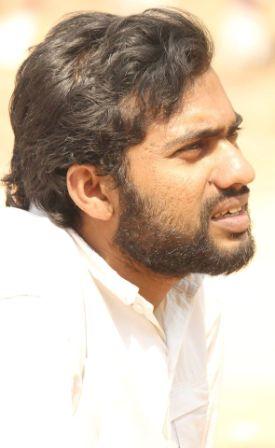Kuffir
Sitaram Yechury’s concerns have been consistently strange: do the communists in India really stand for the working classes? Who do they stand for, which class do they represent exactly?
On Aadhaar, Yechury said recently: “Goalposts constantly shifted on making Aadhaar mandatory. From passing it as a money bill to violating SC’s orders, this is a dangerous game.”
Whose liberty is he talking about? That has to be understood clearly to understand Yechury and other communists. It reminds you more of the libertarian’s idea of liberty.

It also reminds you of a similar question that Babasaheb had asked long ago (in ‘States and Minorities’), which challenged the libertarian understanding of liberty:
Constitutional Lawyers assume that the enactment of Fundamental Rights is enough to safeguard their liberty and that nothing more is called for. They argue that where the State refrains from intervention in private affairs—economic and social—the residue is liberty. What is necessary is to make the residue as large as possible and State intervention as small as possible. It is true that where the State refrains from intervention what remains is liberty. But this does not dispose of the matter. One more question remains to be answered. To whom and for whom is this liberty? Obviously this liberty is liberty to the landlords to increase rents, for capitalists to increase hours of work and reduce rate of wages. This must be so. It cannot be otherwise. [italics mine]
Liberty doesn’t mean the same thing to property owners and to the working classes, or to the Brahmin-savarnas and the bahujans. Does it seem like Yechury is talking about the liberty of the property owners or of the working classes here? Linking Aadhaar to PAN cards seems to have evoked this emotional outburst from Yechury.
Who uses PAN cards?
PAN cards are used by those who pay direct taxes — there are only 30 million people (out of nearly 1300 millions) who file returns in the country and only a section of them actually pay any tax. Broadly, they belong to three groups of the Indian working population: industrialists, employees in the organized sector, self-employed professionals and businessmen. They’re almost 90% Brahmin-savarna. A major section of them, specially those in the government and public sector, are not subjected to any expropriation of their surplus labour. And they along with their landlord kin (or their landlord doubles) in the countryside own the biggest chunk of all property in India. Yechury seems to be standing up for these property owners.
The bahujans, or working classes broadly, faced severe problems during demonetization. But their problems were of a fundamentally different nature from those of the Brahmin-savarnas. Before or after demonetization, the bahujan’s concerns were about livelihoods and survival, while the Brahmins, upper castes talk about freedoms and nationalism. Whose ‘liberty’ was Yechury concerned about back then, a few months ago?
What Yechury said after demonetization makes his interests even more clear. Protesting against demonetisation, he had expressed outrage: ‘This is an attack on the people’s right to property‘. And you thought communism was all about the abolition of private property. It would seem like it is Modi who is the communist and Yechury is a right wing libertarian.
It is good to refer to the communist manifesto at this point. It says: The distinguishing feature of Communism is not the abolition of property generally, but the abolition of bourgeois property.
Were the Singur and Nandigram farmers holding bourgeois property?
Isn’t it strange that the killers of Nandigram and Singur should talk about the right to property? But farmers in Nandigram and Singur were not title-holders, the killers had said, they had only the right to till and feed their families, like serfs under any good feudal lord. In return, they expressed their loyalty to the party for over three decades, just like serfs under any good feudal lord. So what right to property was Yechury talking about?
Even without the Right to Fair Compensation and Transparency in Land Acquisition, Rehabilitation and Resettlement (Second Amendment) Bill, the Indian state had never cared two hoots for the ‘property rights’ of the adivasis and other bahujans over the last seventy years.
It is necessary here to ask a basic question: do Indians have a right to property? Well, they had a fundamental right to property but it was later, in the 70s, changed into a mere constitutional right. The projected intention was to check those who held excess land. But what it did in practice was to protect the upper caste land owners. But still many libertarians say there is no right to property in India.
This ambiguity which surrounds the right to property in India has worked wonderfully for the Brahmin-savarnas. Though they probably control over 80-85% of land in the country, they’re never displaced from their homes, farms, neighbourhoods and workspaces for the noble cause of ‘development’ or ‘larger good’. As for the bahujans, the less said the better – which dam, factory, township, industrial park, highway, railway track, mine, tourist project, real estate scam etc etc didn’t push them out of their homes? Where is the need for a clearly spelled out right to property when Manu’s law still functions so well?
As Babasaheb observed: In politics we will be recognising the principle of one man one vote and one vote one value. In our social and economic life, we shall, by reason of our social and economic structure, continue to deny the principle of one man one value. How long shall we continue to live this life of contradictions? [His speech to the Constituent assembly on November 25, 1949]
So it is still custom and tradition which govern Indian life – social, economic and political, despite the constitution. It is still status, or caste, which determines your access to privileges and rights, not modern laws. Unlike what Harold Laski, Marxist thinker, had observed, about how in the ‘period between the Reformation and the French Revolution’ a new social class (the bourgeoisie) that broke down the barriers which had made ‘privilege a function of status’ had emerged [The Rise of European Liberalism]. But that was Europe, 3-4 centuries ago, India has still remained chaste and unreformed.
Yes, some would call the Brahmin-savarnas India’s bourgeoisie perhaps (the ‘revolutionary’ sections within them would not agree with it, though). But that would hide the most crucial factor behind their status as mostly exploiters – their caste. Also, it would be inaccurate to call them India’s bourgeoisie for the simple reason that the bourgeoisie in Europe were a revolutionary class, according to Marx, who overthrew the feudal aristocracy: that would be impossible for the Brahmin-savarnas because they were/are the aristocracy and clergy here. And now also the proletariat, thanks to Yechury and his forefathers in the communist leadership.
The hybrid Brahmin-savarna social class, aristocracy-clergy-bourgeoisie-proletariat, takes many political forms, from CPM to the Congress and BJP, and espouses many ideologies, from communism to social democracy to libertarianism, but the only interests they all stand for are the Brahmin-savarna interests. What Yechury says now about Aadhaar, Modi said exactly the same a couple of years ago:

Brahmin-savarna parties and political personalities may present radically different public postures on most issues, but there is little difference in their commitment to their shared class interests: they always manage to get results, one way or the other. So their protests over violation of privacy by Aadhaar might also prove successful and win over the Brahmin-savarna judges in the Supreme Court, like it did many times earlier. But for the Bahujans, it provides a moment of clarity: to understand that Brahmin-savarna interests can never converge with Bahujan interests.
~~~
Illustration by Nidhin Shobhana










